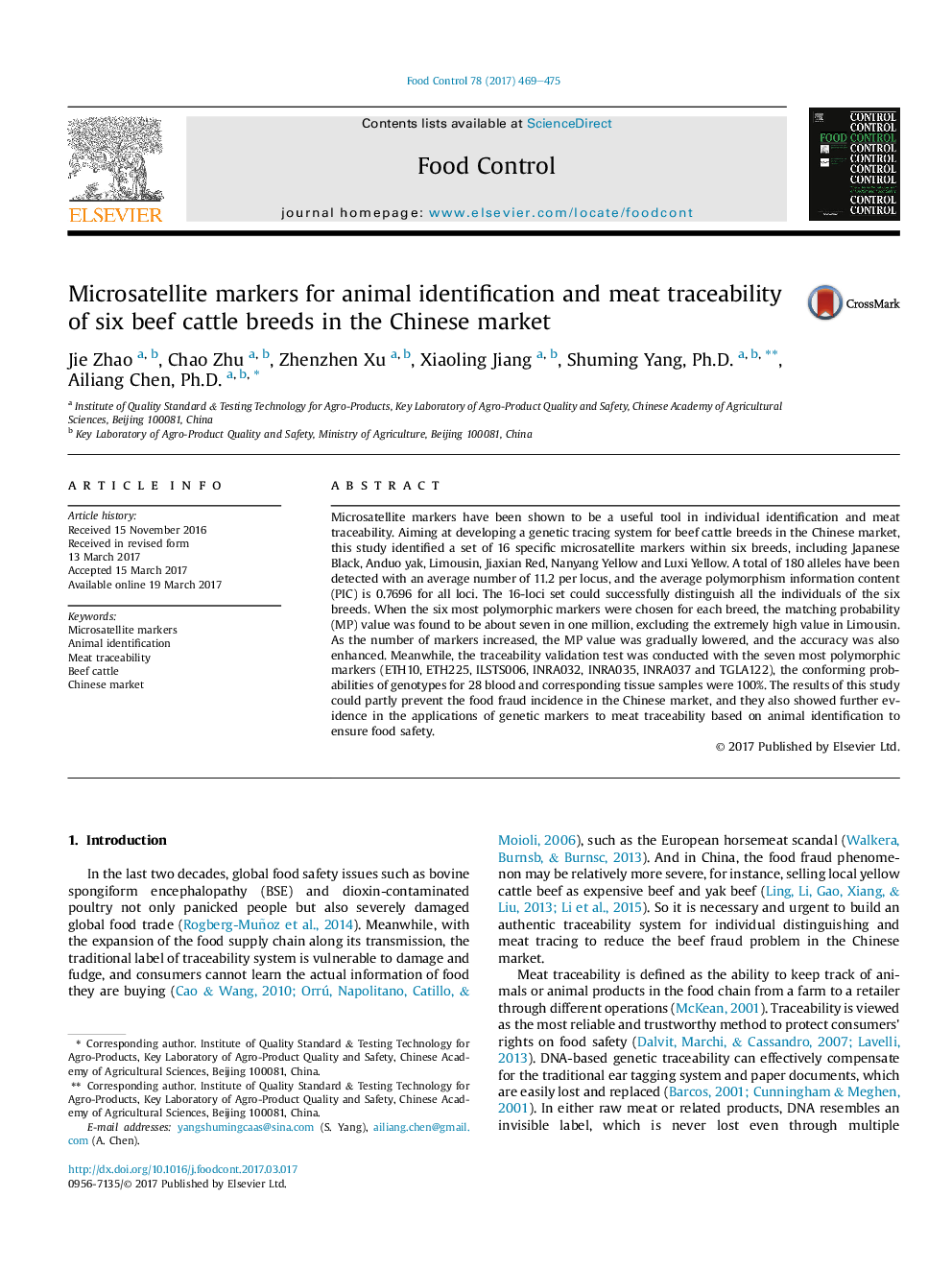| Article ID | Journal | Published Year | Pages | File Type |
|---|---|---|---|---|
| 5767538 | Food Control | 2017 | 7 Pages |
â¢A microsatellite panel is selected for animal identification in the Chinese market.â¢The microsatellite panel is evaluated by multivariate statistical data analysis.â¢Some efficient SSR loci are validated for meat traceability in the Chinese market.
Microsatellite markers have been shown to be a useful tool in individual identification and meat traceability. Aiming at developing a genetic tracing system for beef cattle breeds in the Chinese market, this study identified a set of 16 specific microsatellite markers within six breeds, including Japanese Black, Anduo yak, Limousin, Jiaxian Red, Nanyang Yellow and Luxi Yellow. A total of 180 alleles have been detected with an average number of 11.2 per locus, and the average polymorphism information content (PIC) is 0.7696 for all loci. The 16-loci set could successfully distinguish all the individuals of the six breeds. When the six most polymorphic markers were chosen for each breed, the matching probability (MP) value was found to be about seven in one million, excluding the extremely high value in Limousin. As the number of markers increased, the MP value was gradually lowered, and the accuracy was also enhanced. Meanwhile, the traceability validation test was conducted with the seven most polymorphic markers (ETH10, ETH225, ILSTS006, INRA032, INRA035, INRA037 and TGLA122), the conforming probabilities of genotypes for 28 blood and corresponding tissue samples were 100%. The results of this study could partly prevent the food fraud incidence in the Chinese market, and they also showed further evidence in the applications of genetic markers to meat traceability based on animal identification to ensure food safety.
